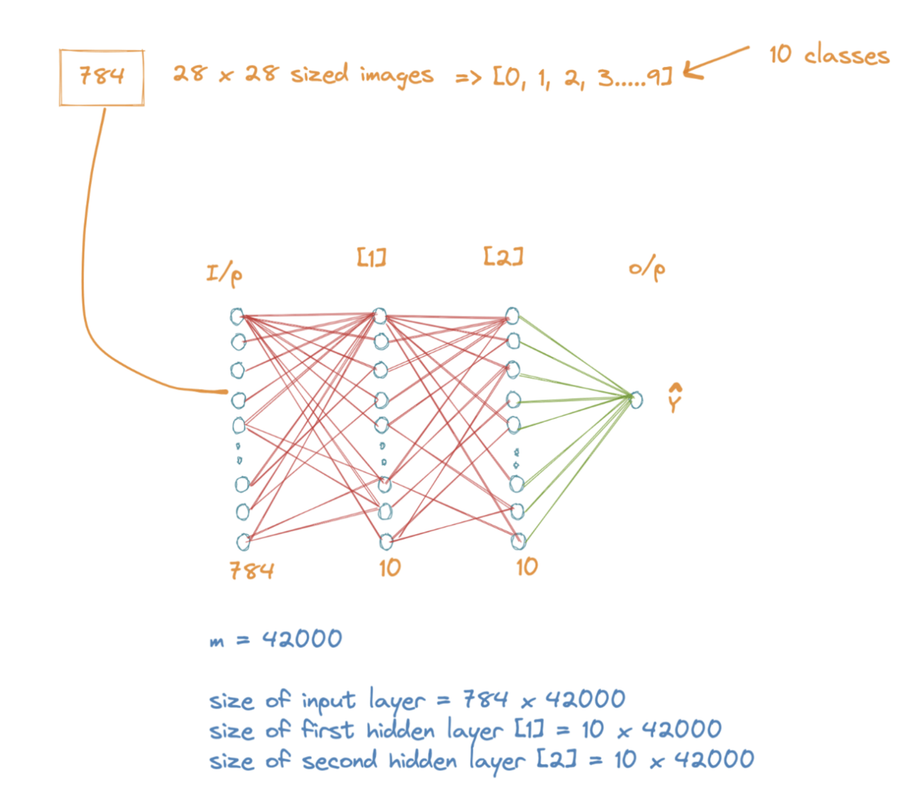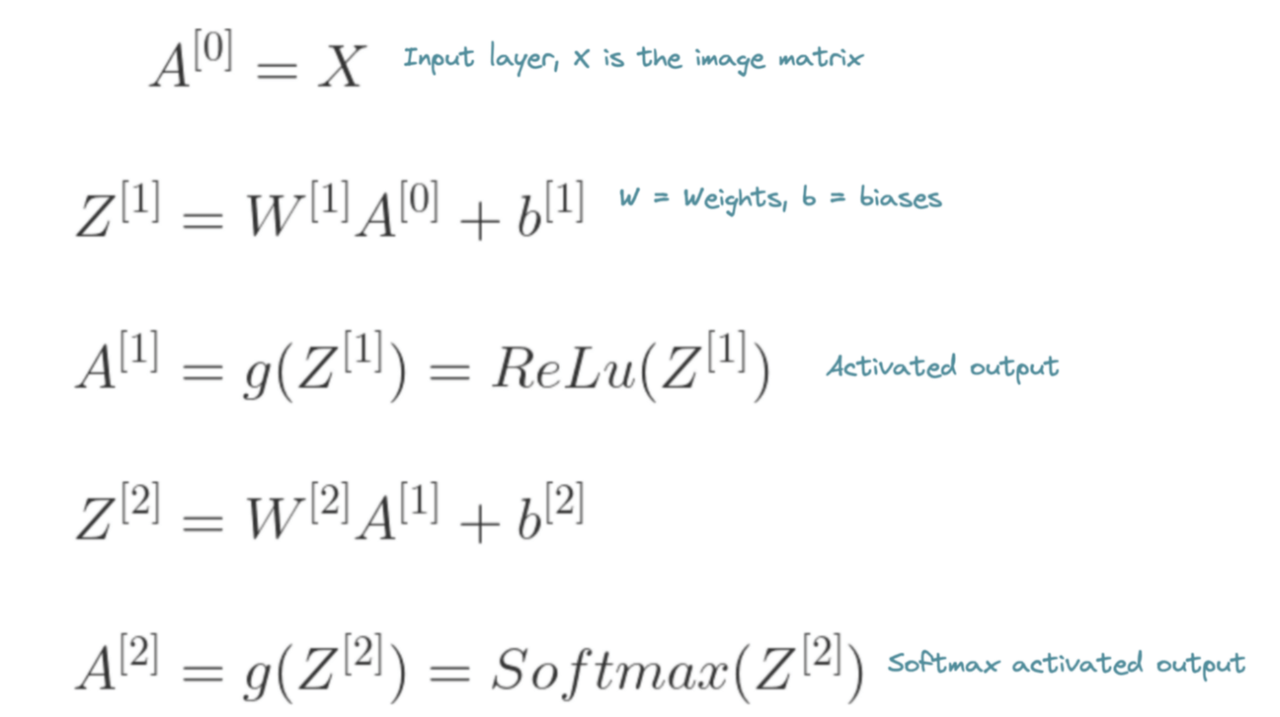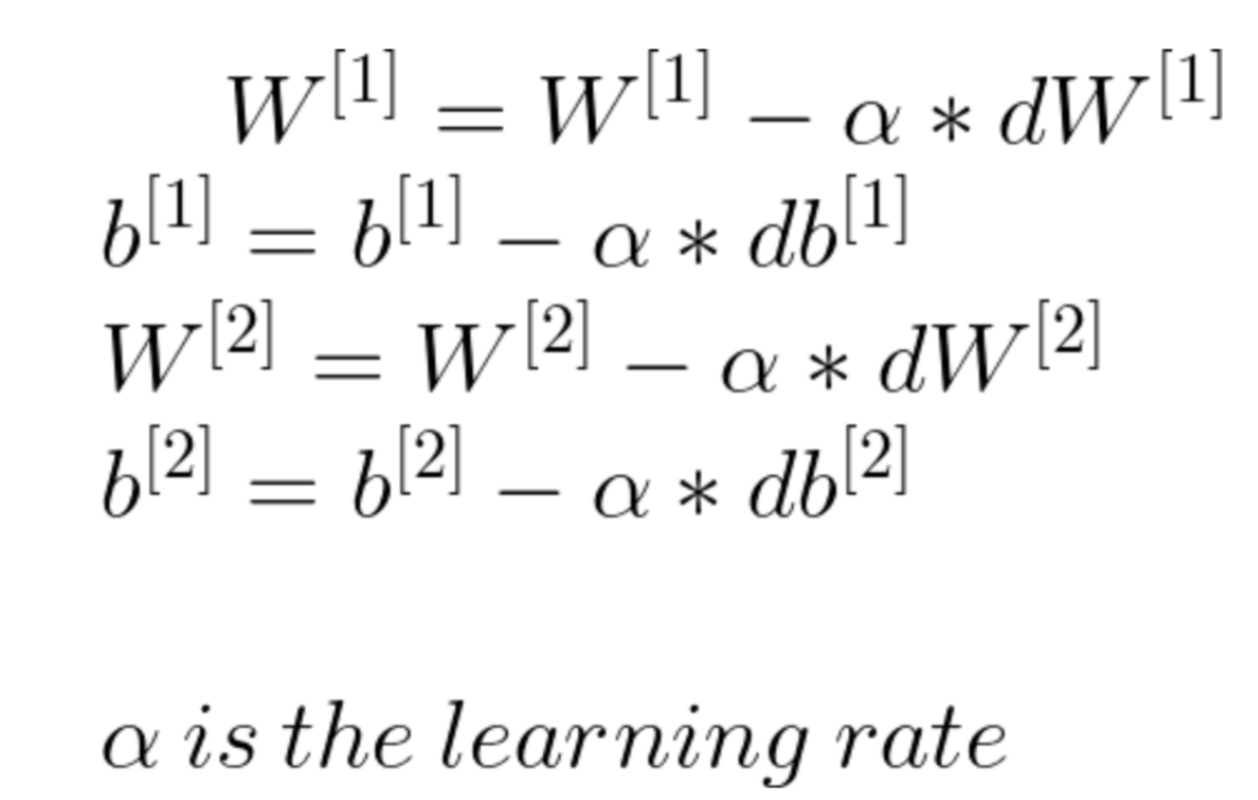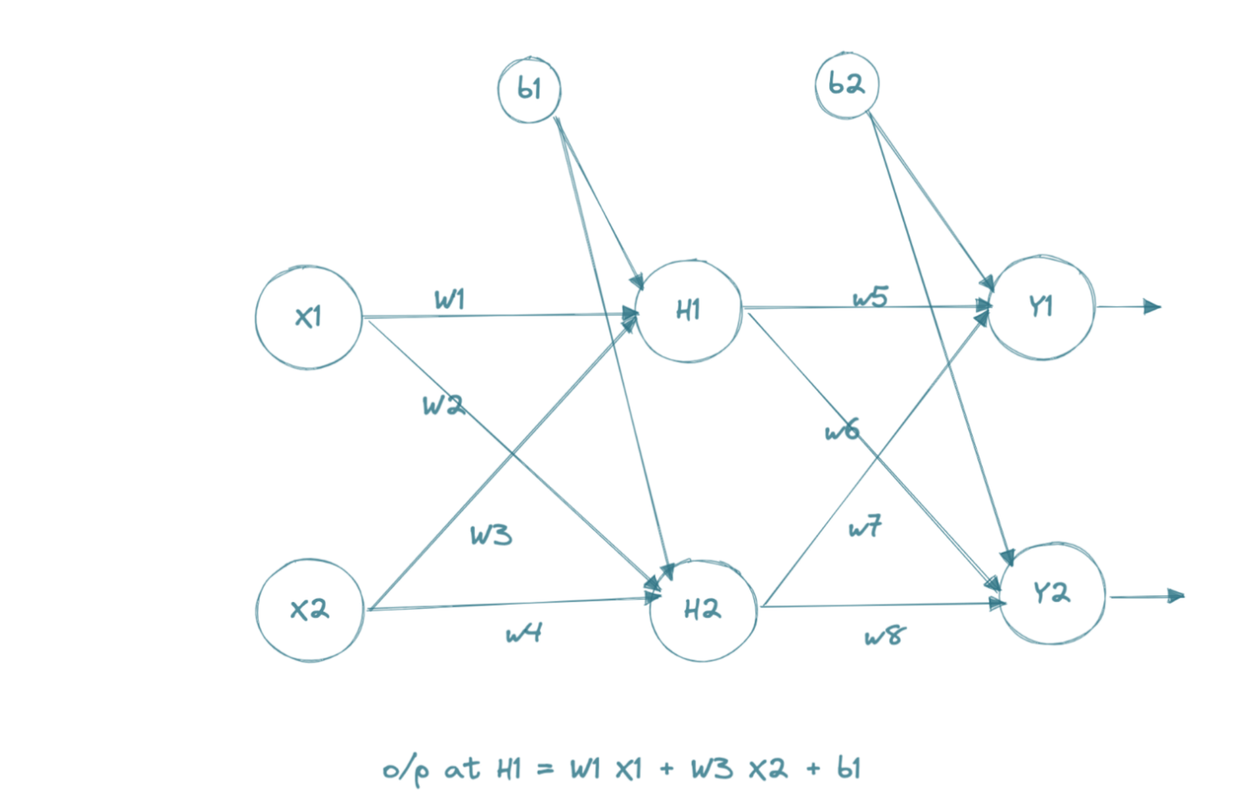Problem statement - Classify the hand written digits with help of a basic neural net designed from scratch
Data - MNIST data present at https://www.kaggle.com/datasets/animatronbot/mnist-digit-recognizer
Methodology Write the forward and backpropagation functions from scratch using simple maths and calculus
import numpy as np
import pandas as pd
from matplotlib import pyplot as plt
data = pd.read_csv('/kaggle/input/mnist-digit-recognizer/train.csv')
data.head(10)
data.shape
Transpose the data, so that one column is one image. The shape would be 785*42000 after transpose
data = np.array(data)
m, n = data.shape
np.random.shuffle(data) # shuffle before splitting into test and training sets
data_test = data[0:2000].T
Y_test = data_test[0]
X_test = data_test[1:n]
X_test = X_test / 255.
data_train = data[2000:m].T
Y_train = data_train[0]
X_train = data_train[1:n]
X_train = X_train / 255.
_,m_train = X_train.shape
X_train.shape
Y_train
def init_params():
W1 = np.random.rand(10, 784) - 0.5
b1 = np.random.rand(10, 1) - 0.5
W2 = np.random.rand(10, 10) - 0.5
b2 = np.random.rand(10, 1) - 0.5
return W1, b1, W2, b2
def ReLU(Z):
return np.maximum(Z, 0)
def softmax(Z):
A = np.exp(Z) / sum(np.exp(Z))
return A
def forward_prop(W1, b1, W2, b2, X):
Z1 = W1.dot(X) + b1
A1 = ReLU(Z1)
Z2 = W2.dot(A1) + b2
A2 = softmax(Z2)
return Z1, A1, Z2, A2
def ReLU_deriv(Z):
return Z > 0
def one_hot(Y):
one_hot_Y = np.zeros((Y.size, Y.max() + 1))
one_hot_Y[np.arange(Y.size), Y] = 1
one_hot_Y = one_hot_Y.T
return one_hot_Y
def backward_prop(Z1, A1, Z2, A2, W1, W2, X, Y):
one_hot_Y = one_hot(Y)
dZ2 = 2*(A2 - one_hot_Y)
dW2 = 1 / m * dZ2.dot(A1.T)
db2 = 1 / m * np.sum(dZ2)
dZ1 = W2.T.dot(dZ2) * ReLU_deriv(Z1)
dW1 = 1 / m * dZ1.dot(X.T)
db1 = 1 / m * np.sum(dZ1)
return dW1, db1, dW2, db2
def update_params(W1, b1, W2, b2, dW1, db1, dW2, db2, alpha):
# print(W1.shape)
# print(dW1.shape)
W1 = W1 - alpha * dW1
b1 = b1 - alpha * db1
W2 = W2 - alpha * dW2
b2 = b2 - alpha * db2
return W1, b1, W2, b2
def get_predictions(A2):
return np.argmax(A2, 0)
def get_accuracy(predictions, Y):
print(predictions, Y)
return np.sum(predictions == Y) / Y.size
def gradient_descent(X, Y, alpha, iterations):
W1, b1, W2, b2 = init_params()
for i in range(iterations):
Z1, A1, Z2, A2 = forward_prop(W1, b1, W2, b2, X)
dW1, db1, dW2, db2 = backward_prop(Z1, A1, Z2, A2, W1, W2, X, Y)
#print(W1.shape)
#print(dW1.shape)
W1, b1, W2, b2 = update_params(W1, b1, W2, b2, dW1, db1, dW2, db2, alpha)
if i % 10 == 0:
print("Iteration: ", i)
predictions = get_predictions(A2)
print(get_accuracy(predictions, Y))
return W1, b1, W2, b2
W1, b1, W2, b2 = gradient_descent(X_train, Y_train, 0.10, 500)
def make_predictions(X, W1, b1, W2, b2):
_, _, _, A2 = forward_prop(W1, b1, W2, b2, X)
predictions = get_predictions(A2)
return predictions
def test_prediction(index, W1, b1, W2, b2):
current_image = X_train[:, index, None]
prediction = make_predictions(X_train[:, index, None], W1, b1, W2, b2)
label = Y_train[index]
print("Prediction: ", prediction)
print("Label: ", label)
current_image = current_image.reshape((28, 28)) * 255
plt.gray()
plt.imshow(current_image, interpolation='nearest')
plt.show()
test_prediction(0, W1, b1, W2, b2)
test_prediction(1, W1, b1, W2, b2)
test_prediction(2, W1, b1, W2, b2)
test_prediction(100, W1, b1, W2, b2)
test_prediction(200, W1, b1, W2, b2)
test_predictions = make_predictions(X_test, W1, b1, W2, b2)
get_accuracy(test_predictions, Y_test)





